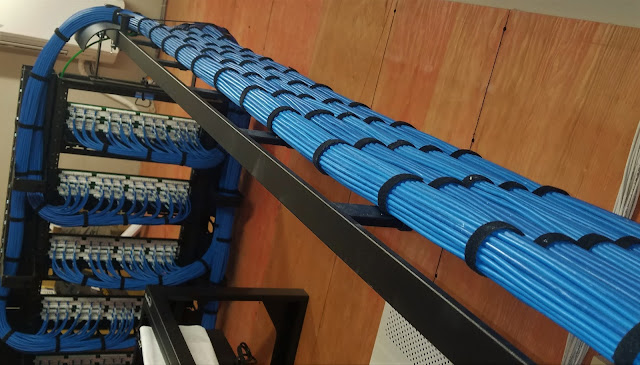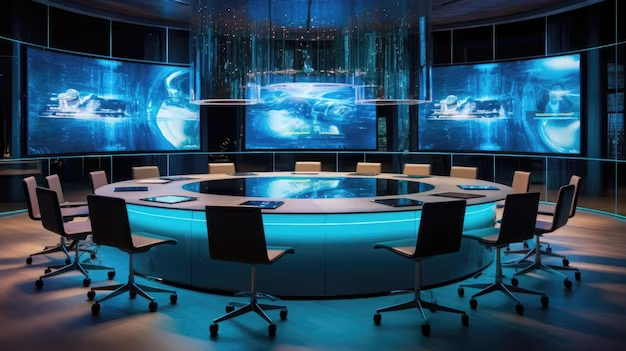The Art of Audio-Visual Integration in Modern Business Spaces
In today's fast-paced business world, audio-visual solutions play a pivotal role in enhancing communication and collaboration. These technologies facilitate seamless interactions in various settings, from boardrooms to conference halls, ensuring clear and effective exchanges of ideas. The integration of high-quality audio and video systems enhances presentations, meetings, and remote communications, making them more engaging and productive. This is crucial in a digital age where clear and impactful communication is key to success. By integrating advanced audio-visual solutions , businesses can create dynamic, interactive environments that foster creativity and efficiency.
The evolution of audio-visual technology in business has been transformative, marking a significant shift in how companies communicate and operate. This evolution is characterized by rapid advancements in both hardware and software, leading to more sophisticated and user-friendly systems. These improvements have made it possible for businesses to adopt more interactive and immersive communication methods. High-definition video conferencing, immersive sound systems, and integrated digital displays are just a few examples of how audio-visual technology has revolutionized business environments. This evolution is not just about technological advancement; it's about enhancing human interaction and collaboration, making business operations more efficient and productive.
The integration of these
technologies into business strategies is a testament to their growing
importance in the modern corporate world.
The key components of audio-video solutions for businesses encompass a range of technologies tailored to enhance communication and presentation in a corporate setting. These include high-definition video conferencing systems for clear, remote communication; professional-grade audio systems ensuring crisp and clear sound quality; interactive digital displays and whiteboards for engaging presentations and collaborative work; and sophisticated control systems for seamless integration and management of all AV equipment. Additionally, reliable network infrastructure and software for video and audio streaming are critical for uninterrupted operation. Each component plays a vital role in facilitating effective and efficient business communications, meetings, and presentations.
The process of audio-visual installation in a business environment is a crucial aspect of implementing effective audio-video solutions. This process begins with a thorough assessment of the business’s unique needs, followed by designing a customized solution. It involves selecting the right equipment, including displays, speakers, microphones, and control systems, that align with the business's specific requirements. Professional installation ensures that all components are optimally integrated for seamless functionality. It also includes configuring software for video conferencing and other communication tools. Crucially, this process ensures that the audio-visual solutions are not only technically sound but also user-friendly and adaptable to the dynamic needs of a modern business environment. Choosing the Right Audio Visual Solutions for Your Business is the most important thing. I must suggest you always look for professional Audio Visual Installation Services.
The Role of Professional Audio Visual Installation Services:
Expertise and Experience: Professional audio-visual installation services bring a wealth of expertise and experience to the table. They have trained technicians who understand the intricacies of audio-visual equipment, ensuring that installations are done correctly the first time. This expertise is crucial in optimizing the performance of your AV systems and avoiding costly mistakes.
Customized Solutions: Professionals can
tailor audio-visual installations to meet your specific needs and requirements.
They assess your space, understand your goals, and design a system that not
only fits seamlessly into your environment but also delivers the functionality you
desire. Customization ensures that your AV system is optimized for your unique
needs.
Quality Assurance:
Professional installers use high-quality components and follow industry
standards to guarantee the reliability and durability of your audio-visual
equipment. This ensures that your system operates efficiently and minimizes the
risk of technical issues or breakdowns.
Integration: Many modern AV systems involve multiple components like projectors, screens, speakers, control systems, and more. Professional installers are skilled at integrating these various elements into a cohesive system, ensuring that everything works harmoniously. This integration is vital for a smooth user experience.
Troubleshooting and
Support: In case
of any issues or glitches with your AV system, professional installers are
equipped to diagnose and resolve problems quickly. They offer ongoing support
and maintenance services to keep your system running smoothly over time.
Time and Cost Efficiency: Hiring professionals can save you time and money in the long run. They have the tools, knowledge, and resources to complete installations efficiently, reducing downtime and potential disruptions. Moreover, they can help you avoid costly mistakes that may arise from DIY installations.
Compliance and Safety: Professional installers are well-versed in safety regulations and compliance standards. They ensure that your AV system adheres to these guidelines, reducing safety risks and potential legal issues associated with non-compliance.
Why Only Professional Services:
Technical Complexity: Audiovisual systems can be highly complex, involving intricate wiring, programming, and calibration. Professionals have the training and experience to handle these technical aspects effectively.
Warranty Preservation: Many AV equipment
manufacturers require professional installation to maintain warranty coverage.
DIY installations may void your warranty, leaving you responsible for any
repair or replacement costs.
Risk Mitigation: Professional installers minimize the risk of accidents, damage to equipment, or improper functioning. This reduces potential liabilities and ensures a safe and reliable AV system.
Long-term Performance: Professionals optimize
your AV system for long-term performance and reliability, ensuring that you get
the most out of your investment over its lifespan.
Expert Advice:
Professionals can offer valuable advice on equipment selection, placement, and
future upgrades, helping you make informed decisions.
Audio-visual systems are essential for delivering high-quality sound and visual experiences, whether in homes, businesses, or public spaces. To ensure long-term effectiveness and optimal performance, it's crucial to maintain and periodically upgrade these systems. Here are some tips on how to do so:
Maintenance Tips:
Regular Cleaning: Dust and dirt can
accumulate on screens, projectors, and speakers, affecting the quality of the
audio and visual output. Regularly clean the equipment using appropriate
cleaning solutions and microfiber cloths to prevent buildup.
Cable Management: Ensure that cables are organized and not tangled. Proper cable management reduces wear and tear, minimizes the risk of tripping hazards, and makes it easier to identify and address issues.
Ventilation: Proper ventilation is essential for preventing overheating of audio-visual equipment. Ensure that there is adequate airflow around components such as amplifiers, receivers, and AV receivers.
By following these maintenance and upgrading tips, you can ensure that your audio-visual system remains effective, provides high-quality audio and visual experiences, and stays up-to-date with the latest technology trends. Regular maintenance and strategic upgrades will help you get the most out of your investment and keep your AV system performing at its best for years to come.
Ensure your audio-visual
system shines with brilliance – start maintaining and upgrading today for an unbeatable
audio-visual experience!




Comments
Post a Comment